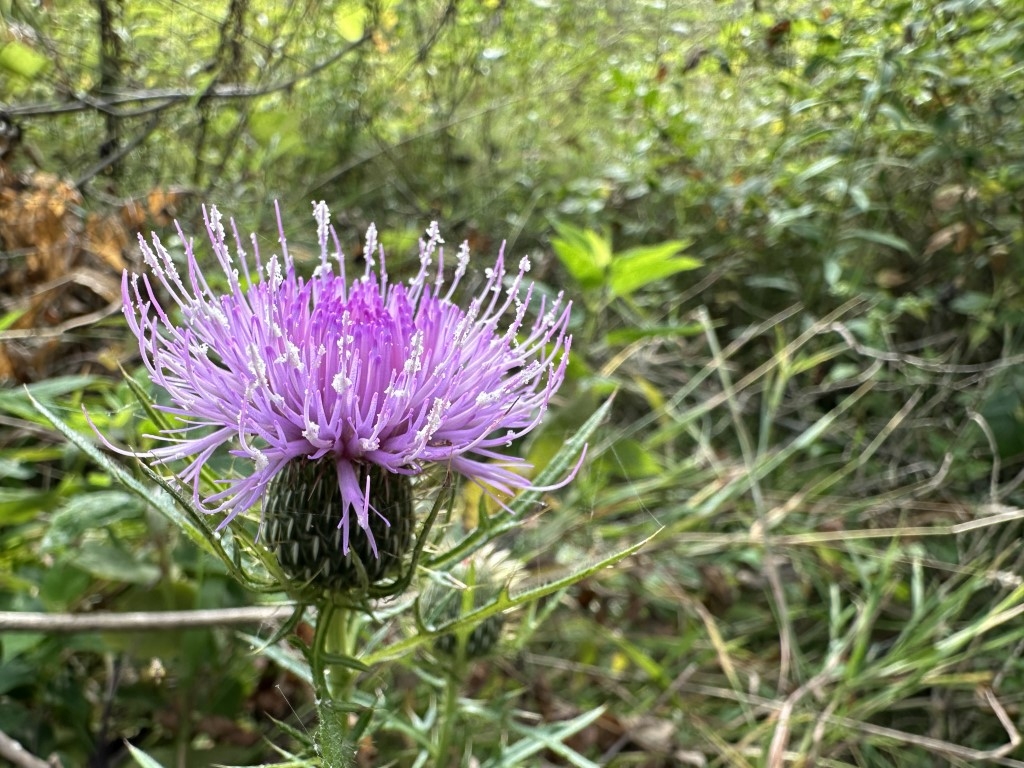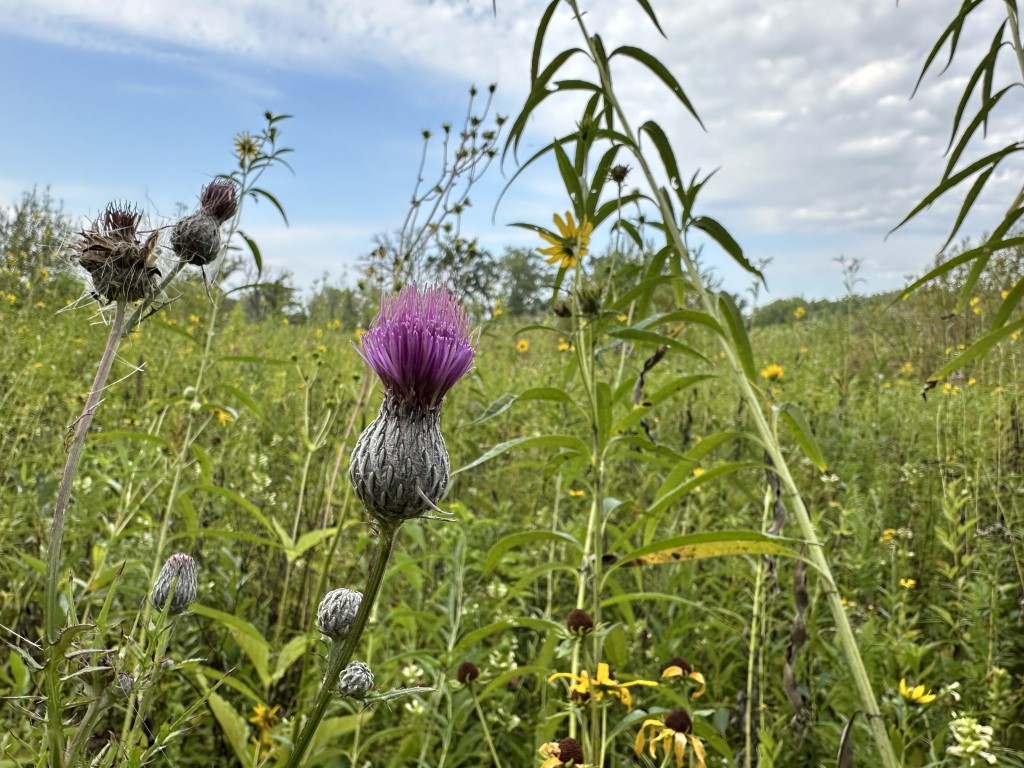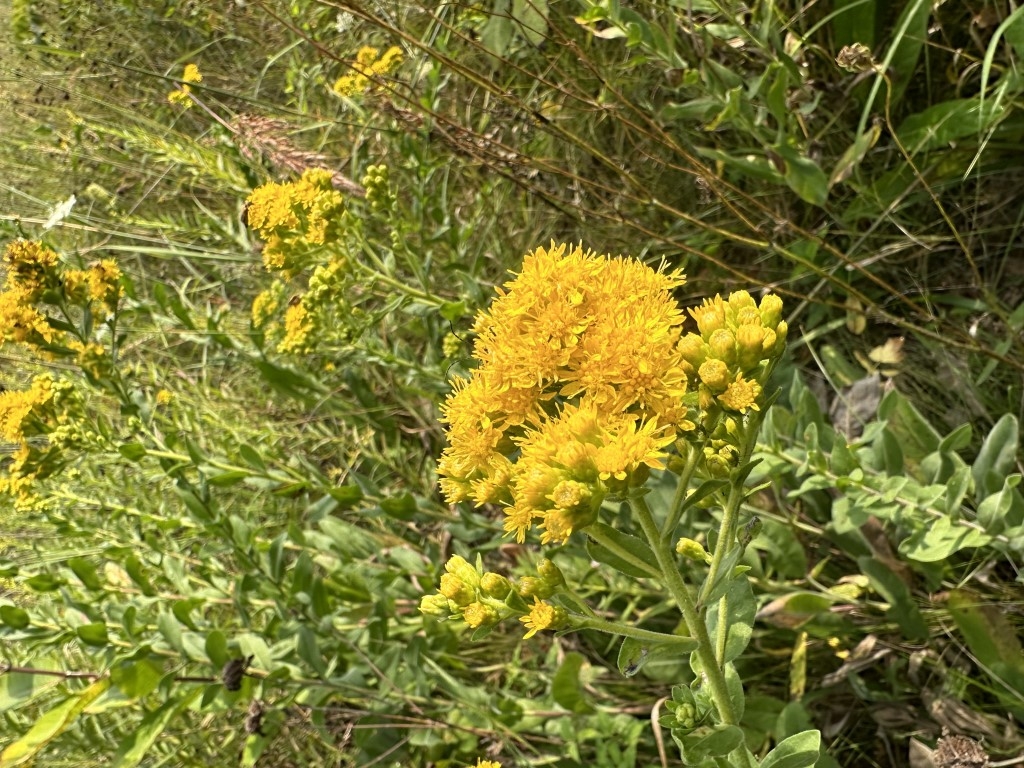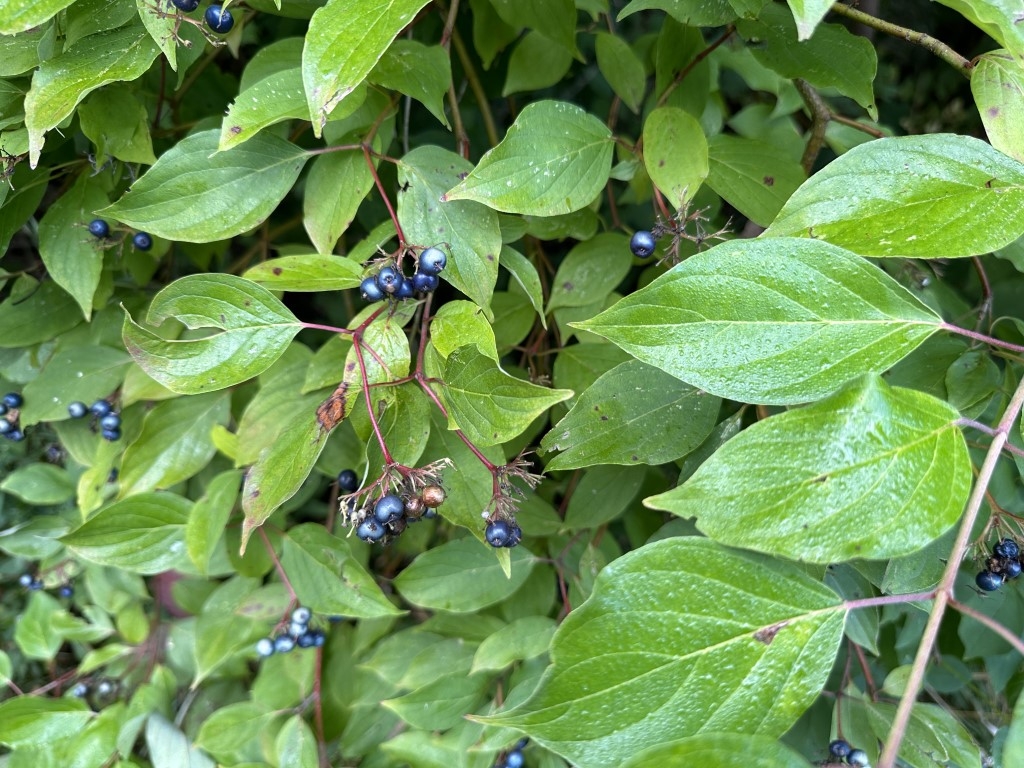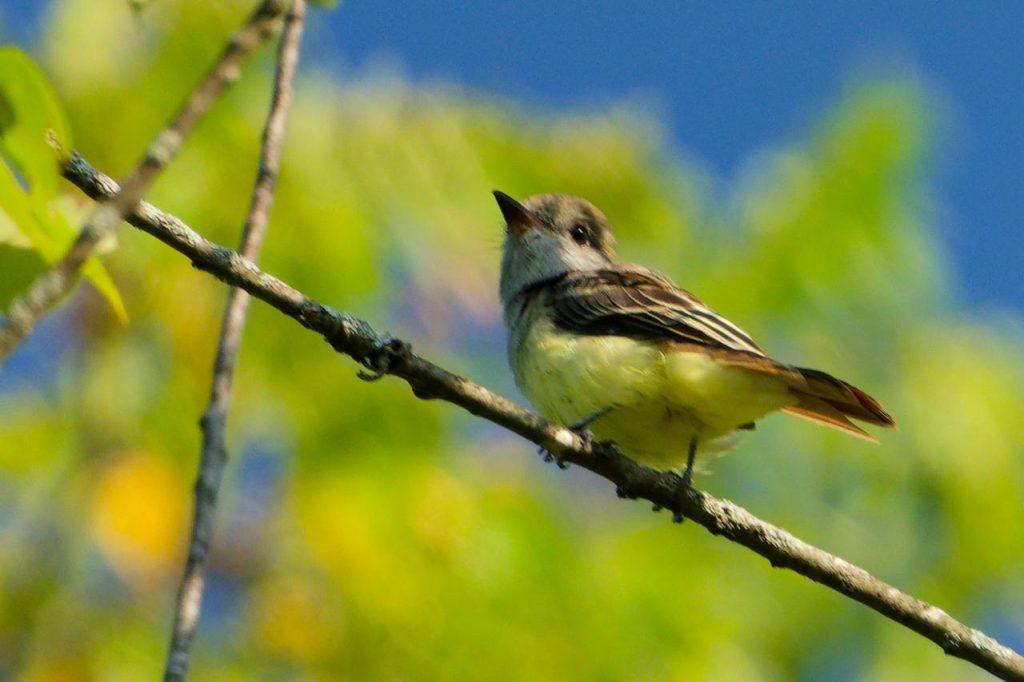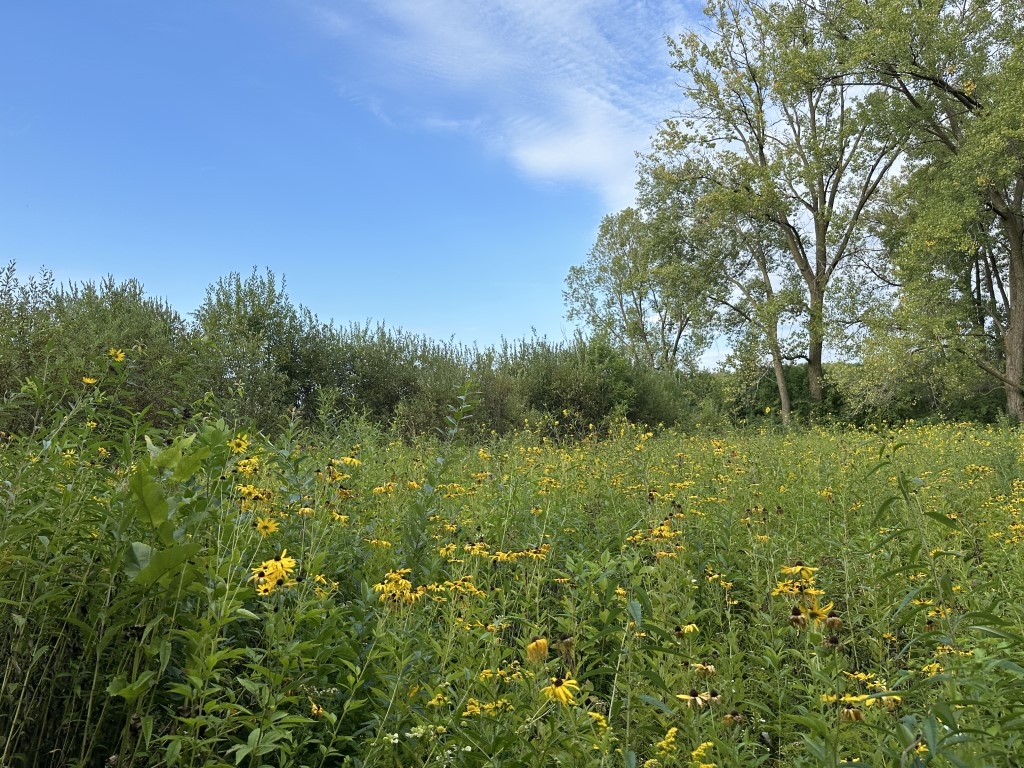It’s hot and miserable outside this week. Because I’ll be spending a lot of time indoors in the air conditioning I’m glad I got in a nice hike at a nearby state park on Saturday.
Many of the wildflowers are winding down for the season, but there are still plenty of late-season bloomers like thistles and rudbeckias and goldenrods. Soon the pretty purple asters will start blooming too.
This is a Field Thistle:
Not to be confused with Swamp Thistle which I’d never noticed before (the Seek app is a big help!):
This is Stiff-leaved Goldenrod. The flowers are closer together than the typical hybrid goldenrods for sale at garden centers for backyard gardens:
Fruit-bearing shrubs like this Silky Dogwood attract fruit-eating birds this time of year like Robins, Rose-breasted Grosbeaks and Gray Catbirds:
Speaking of birds, my friend Jill and I don’t usually go birdwatching in August (which my eBird data from the last 9 years keeps reminding me!), but we hit the mother lode on Saturday.
Many of the birds that come through our area each spring on their way to Canada and the Arctic for breeding season are now coming back through in the other direction on their way to Mexico or Central or South America for the winter.
We saw birds we usually only see in May like warblers, vireos and flycatchers. And there were so many baby birds.
We spotted baby Northern Flickers, Great-crested Flycatchers, Red-headed Woodpeckers and even a young Great Blue Heron. They were all past the stage where parents need to constantly feed them, and were instead practicing looking for food on their own.
Just beyond in this wildflower meadow in a grove of trees was a family of Red-headed Woodpeckers with mom trying to keep all the youngsters rounded up.
And off in the distance a pair of Ospreys were still catching food for their young, and those big loud babies were constantly calling out for more. Ospreys eat fish so they were no threat to all the other baby birds in the area.
It’s harder to ID birds during fall migration because birds molt into their winter “outfits” and many of the male songbirds lose their vibrant colors. Instead there are a lot of drab gray, tan and olive-green birds spotted through my binoculars.
Thankfully many of the birds we saw were still singing or vocalizing so we could use the Merlin app to help us ID some of the trickier ones.
It turns out August is a great time to go birdwatching!

